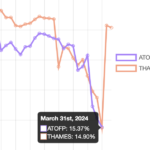If there was one thing that regulators were sure about at the start of the pandemic, it was that it would not become a bank story. Crisis yes, maybe even a touch of market turmoil for a few weeks in March, but never something that would embroil the world’s mightiest financial institutions, the way that subprime mortgages embroiled them 12 years before.
So starting in March, a series of emergency measures were rolled out that temporarily eliminated or blunted restrictions on bank balance sheets, along with ramped up support for financial markets that in the US at least, was unprecedented. Risky Finance joined forces with Washington DC-based advocacy group Americans for Financial Reform to analyse some of the impact on the six biggest US banks.
Our research showed that the key limiting constraint this year for the banks has been the supplementary leverage ratio (SLR), part of the 2012 Dodd-Frank Act that harmonised US bank regulation with global Basel rules. The Federal Reserve sets the regulatory minimum SLR at 5%. At the end of June, the top six banks had an average SLR of 7%, comfortably far from the minimum.
 Levelling the Playing Field
Levelling the Playing Field
 Barclays and Labour's growth plan
Barclays and Labour's growth plan
 Plummeting bonds reflect souring UK mood for outsourcing and privatisation
Plummeting bonds reflect souring UK mood for outsourcing and privatisation
 Dimon rolls trading dice with excess capital
Dimon rolls trading dice with excess capital